Archives
- 2025-10
- 2025-09
- 2025-03
- 2025-02
- 2025-01
- 2024-12
- 2024-11
- 2024-10
- 2024-09
- 2024-08
- 2024-07
- 2024-06
- 2024-05
- 2024-04
- 2024-03
- 2024-02
- 2024-01
- 2023-12
- 2023-11
- 2023-10
- 2023-09
- 2023-08
- 2023-07
- 2023-06
- 2023-05
- 2023-04
- 2023-03
- 2023-02
- 2023-01
- 2022-12
- 2022-11
- 2022-10
- 2022-09
- 2022-08
- 2022-07
- 2022-06
- 2022-05
- 2022-04
- 2022-03
- 2022-02
- 2022-01
- 2021-12
- 2021-11
- 2021-10
- 2021-09
- 2021-08
- 2021-07
- 2021-06
- 2021-05
- 2021-04
- 2021-03
- 2021-02
- 2021-01
- 2020-12
- 2020-11
- 2020-10
- 2020-09
- 2020-08
- 2020-07
- 2020-06
- 2020-05
- 2020-04
- 2020-03
- 2020-02
- 2020-01
- 2019-12
- 2019-11
- 2019-10
- 2019-09
- 2019-08
- 2019-07
- 2019-06
- 2019-05
- 2019-04
- 2018-07
-
Licarbazepine The causes of POD are complex and not entirely
2020-10-30
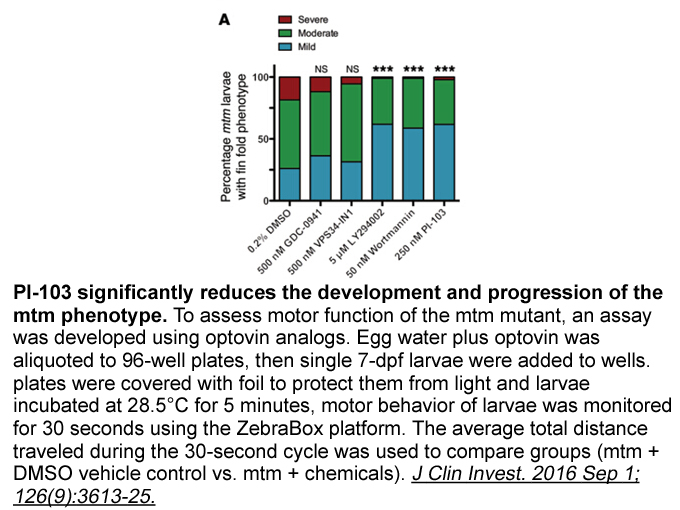
The causes of POD are complex, and not entirely clear. Androsova et al, believed that the main molecular mechanism of POD is a central cholinergic deficiency caused by deregulation of cholinergic anti-inflammatory pathways leading to increased inflammation. The cholinergic anti-inflammatory pathway,
-
Among the down regulated genes
2020-10-30
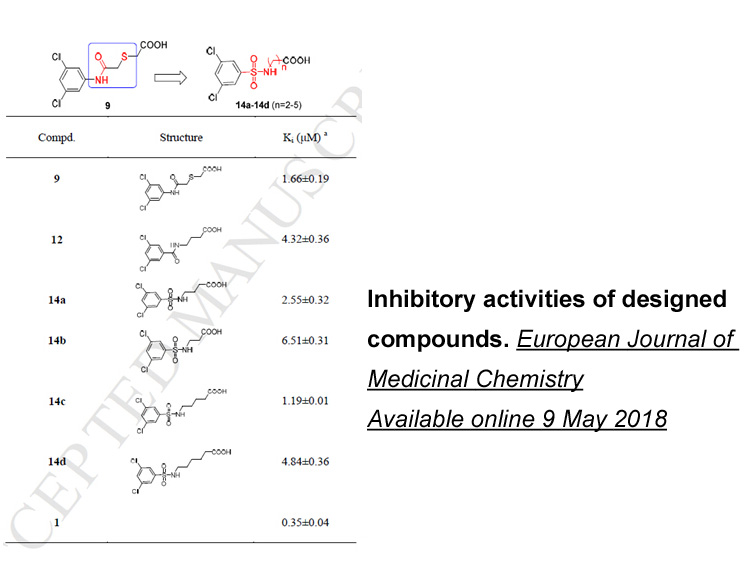
Among the down-regulated genes were several of interest. Coronin2a (Coro2a), a component of the nuclear receptor co-repressor complexes, contributes to de-repression of inflammatory response genes (Huang et al., 2011). Mill1, an MHC family member expressed in hair follicles, represses wound healing
-
br Materials and methods br Results br
2020-10-30
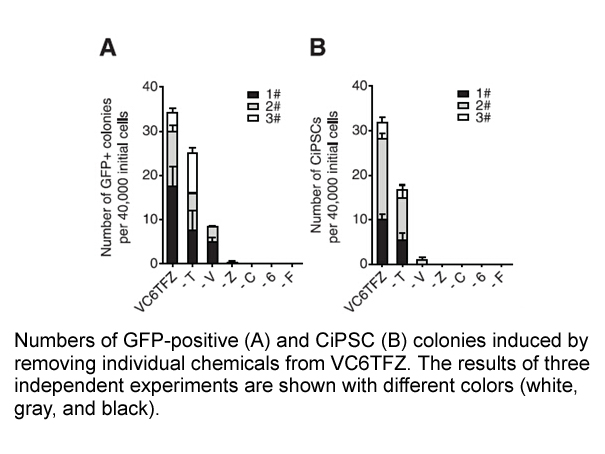
Materials and methods Results Discussion COX-2-mediated production of PGE2 is involved in cell growth and metastasis of many cancers. Previous studies indicated that COX-2 was overexpressed in many cancer tissues and that PGE2 increased cancer cell growth, a process that could be suppressed
-
Cy3 azide sale br Chondroitin sulfate proteoglycans CSPGs ar
2020-10-30
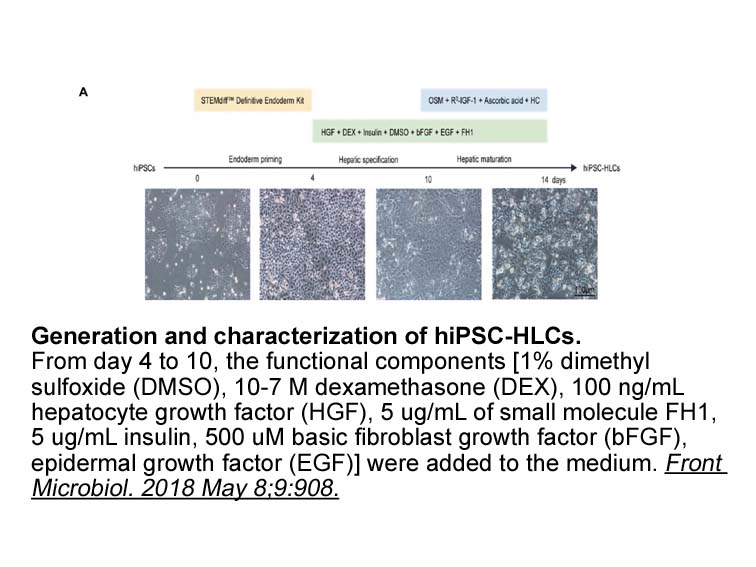
Chondroitin sulfate proteoglycans (CSPGs) are major components of the extracellular matrix in cartilage. Each CSPG comprises a single core protein and attached chondroitin sulfate (CS), belonging to the glycosaminoglycan family of sugar chains. CSPGs and CS are involved in numerous biological and
-
Since the number of peptides hydrolized by PEP is quite
2020-10-30

Since the number of peptides hydrolized by PEP is quite large, it is not easy to relate the increase of enzymatic activity with the altered changes of a concrete peptide. However, it is noticeable that imbalances of several natural substrates of PEP [6], such as angiotensins, bradykinin, vasopressin
-
Dgat mice however had less adipose tissue as
2020-10-30
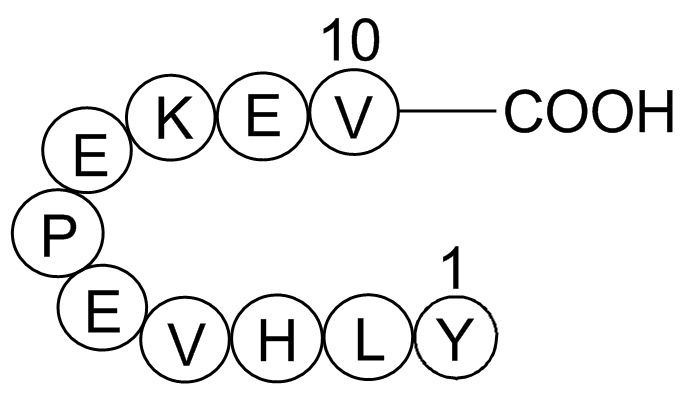
Dgat−/− mice, however, had less adipose tissue, as reflected by lower total fat pad weights and body triglyceride content. Because of these findings, we hypothesized that, although Dgat−/− mice could make triglycerides through non-DGAT pathway(s), their triglyceride synthesis capacity might not be e
-
Traditionally serum triglycerides have been
2020-10-30
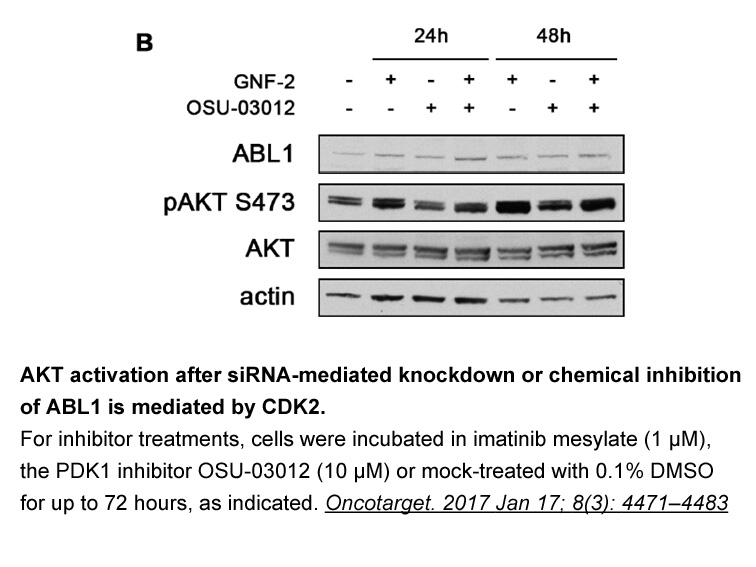
Traditionally, serum triglycerides have been measured in the clinic in the fasted state in order to reduce variability and also to facilitate the calculation of LDL-cholesterol via the Friedewald equation, which was derived using fasted samples (Warnick and Nakajima, 2008). We have previously report
-
The IV chains of mature GBM are built exclusively by
2020-10-30
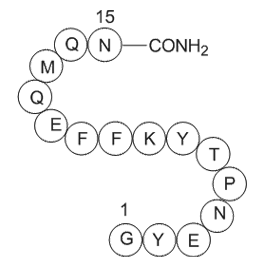
The α3/α4/α5(IV)-chains of mature GBM are built exclusively by podocytes (not by endothelial cells) (Abrahamson et al., 2009), placing the podocytes into the focus of GBM-diseases such as Alport syndrome. Alport syndrome (AS) is caused by mutations in the COL4A3, 4 or 5 genes coding for the α3/α4/α5
-
br Prostaglandin D PGD is
2020-10-30
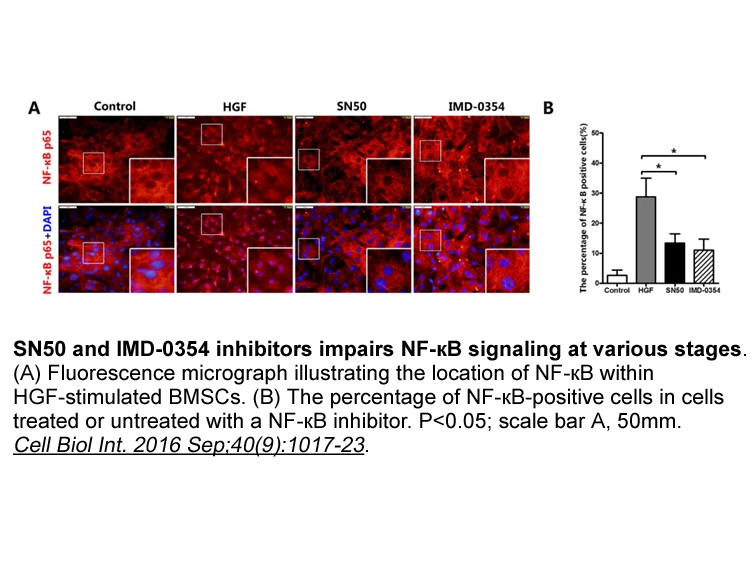
Prostaglandin D (PGD) is derived from the metabolism of arachidonic CVT 10216 by cyclooxygenases and downstream PGD synthases. In the immune system, PGD is mainly produced by mast cells but also although at lower levels, by macrophages and Th2 lymphocytes. PGD binds to three different receptors, t
-
Although differences in several nociceptive tests have previ
2020-10-30
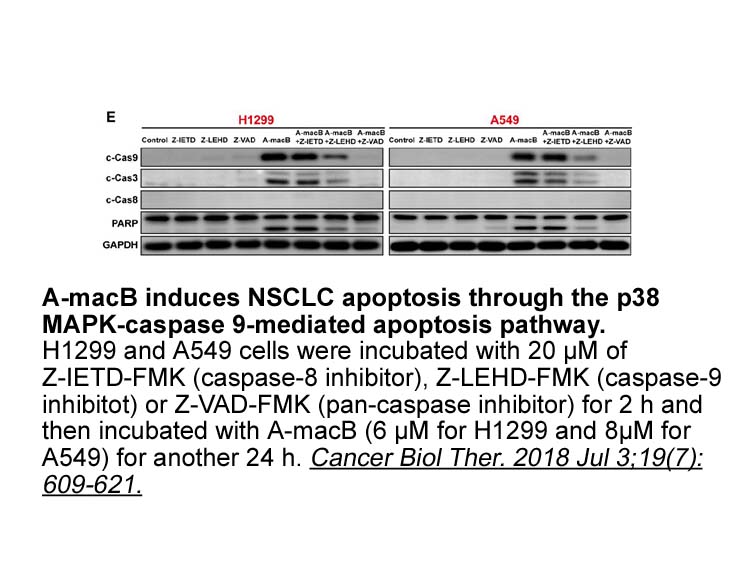
Although, differences in several nociceptive tests have previously been described across strains (Mogil et al., 1999), it is the first time that pain sensitivity in response to chemical and thermal stimuli has been evaluated in B6,129CRHtklee mice. Our results showed no differences in pain sensitivi
-
Other mutations in the SYNE region exons have been
2020-10-30
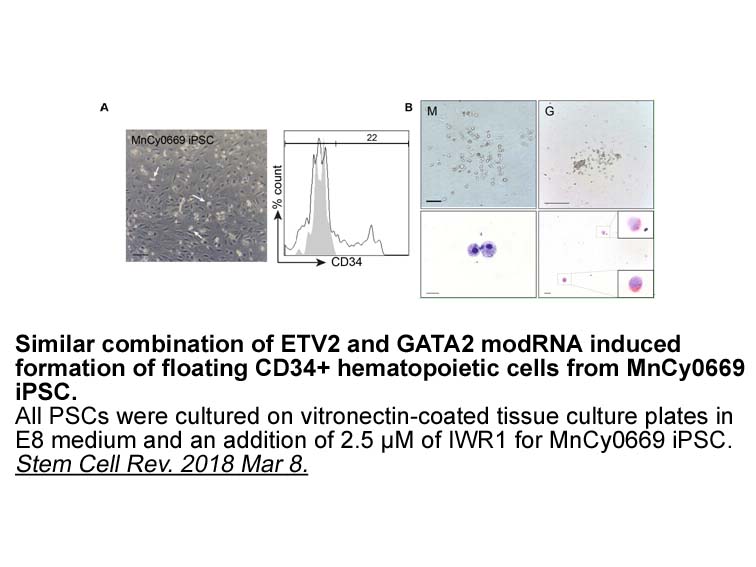
Other mutations in the SYNE1 3′ region (exons 81–85) have been implicated in an upper motor neuron disease, ARCA1 (Gros-Louis et al., 2007). The disease is characterized by progressive movement, coordination, and balance problems caused by disrupted Purkinje cell function and their impaired signalin
-
In human neuroblastoma SH SY Y
2020-10-30
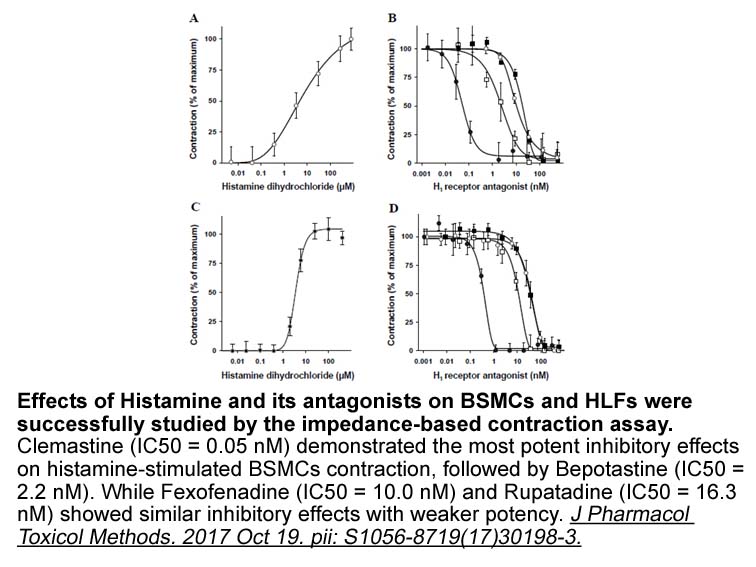
In human neuroblastoma SH-SY5Y DAMGO and in lymphoma Jurkat cells, Yamanaka et al. [56] showed that exogenously added 24(S)-hydroxycholesterol could be efficiently esterified by ACAT1. These results suggest that both ACAT1 and ACAT2 can control the oxysterol levels by directly esterifying them, in
-
The redox sensitive transcription factor NF B
2020-10-30
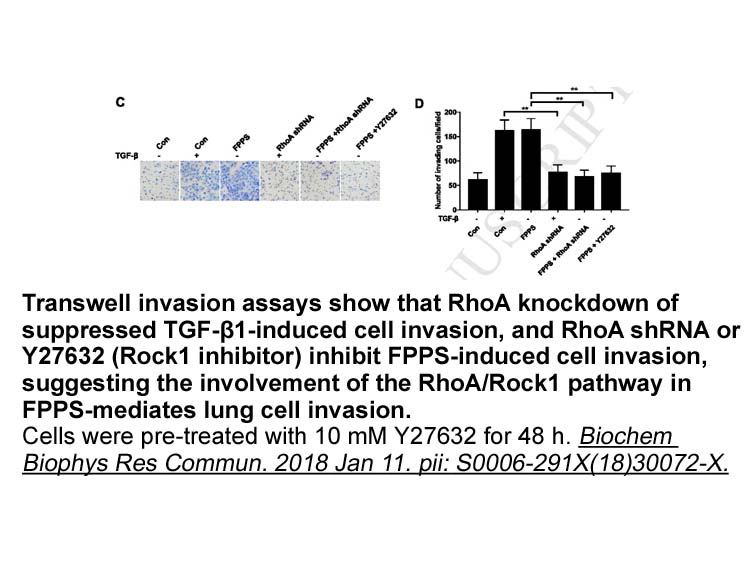
The redox sensitive transcription factor NF-κB is reported to play a crucial role in the COPD pathogenesis via up regulating the expression of several cytokines, chemokines, growth factors, and adhesion molecules [71]. Incidentally, we and others have shown that PARP-1 modulates the NF-κB activation
-
ERR is constitutively active in the absence
2020-10-29
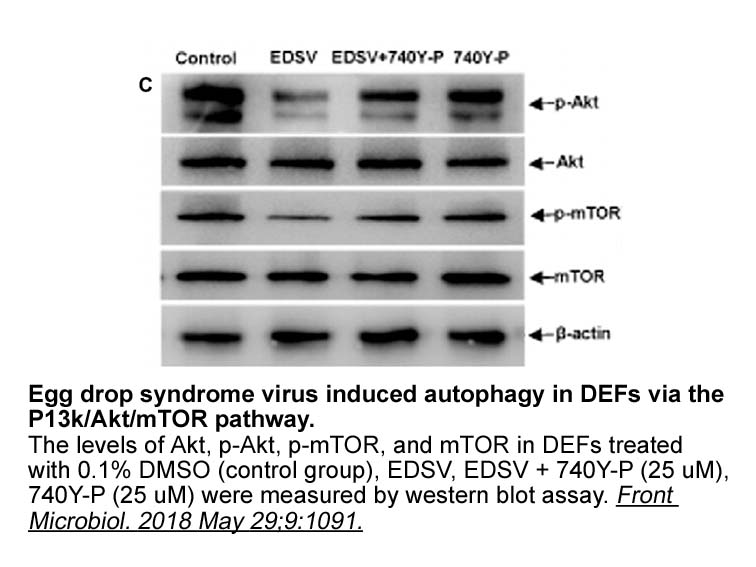
ERRγ is constitutively active in the absence of endogenous ligand. However, several synthetic ligands that can repress or induce ERRγ function by disrupting ERRγ-coactivator interactions have been reported to date. The estrogen receptor modulators diethylstilbestrol (DES) and 4-hydroxytamoxifen (4-O
-
rat 4 receptor For immobilization of enzymes natural polymer
2020-10-29
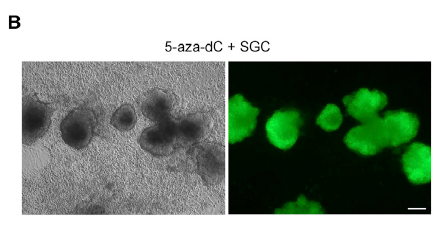
For immobilization of enzymes, natural polymers depict several outstanding features as support. These materials are inert, non-toxic, biodegradable and biocompatible. As well as, they can be treated with different functional groups easily by chemical reactions that occur under gentle conditions in a
16260 records 801/1084 page Previous Next First page 上5页 801802803804805 下5页 Last page